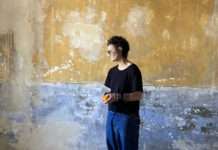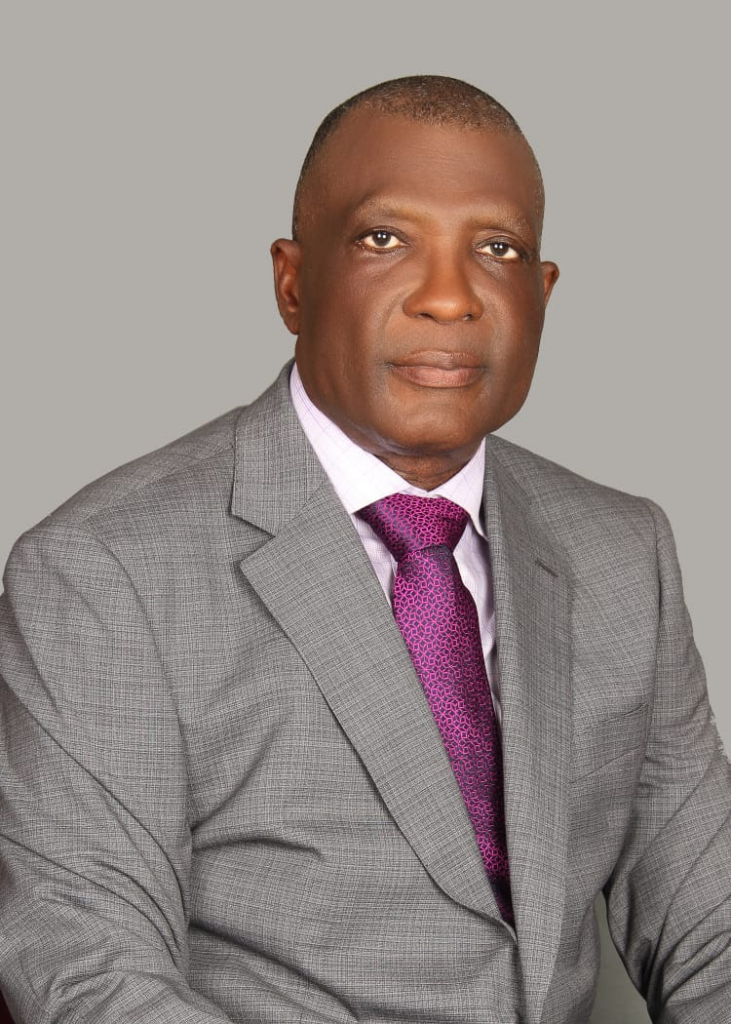- In the forests surrounding Río Abiseo National Park, in the Peruvian Amazon region of San Martín, a burgeoning chocolate industry is gaining traction.
- After dedicating more than twenty years to the cultivation of coca to supply cocaine trafficking, today the community of Mariscal Cáceres is committed to legal production of cacao that allows them to protect more than 300,000 hectares of forest.
- Cacao growers in the community are partnering with Swiss dairy farmer to produce high-quality chocolate for markets in Europe and the U.S.
Augusto Sangama confesses that, twenty years ago, his life was worth nothing. He believes others in the community of Huicungo in the San Martín region in northern Peru felt the same way, saying that if any of them had been killed, no one would have asked for explanations of their death. These were times when cocaine paste was sold as if it were a kilo of sugar or rice, showing how high the demand was and leading to an increase in trafficking. Planes with drugs left daily from the Alto Huallaga Valley, where the community is located. Augusto recalls that the majority of local farmers were engaged in the illicit cultivation of coca crops, from which cocaine is produced. Now at 64, he observes the hundreds of cacao tree seedlings destined for the chocolate industry he has planted on land once used to grow coca, as well as the intact biodiversity of nearby Río Abiseo National Park, he can’t understand why he could not live like this before.
“Where there was coca, there was money,” Sangama recalled, saying that no cacao producer forgets what happened in the 1980s and 90s after the drug cartels and the Shining Path guerrilla rebel organization had seized the region. “You could not make a mistake because if you did they beheaded you in front of everyone,” he said. Many share these memories with their children and grandchildren. “We must remember how much progress we have made,” said Sangama, who is now president of the Association of Agricultural Producers of Huicungo (Apahui).
Much has happened since 2000 when there were only a few farmers who believed they could make a living cultivating cacao in San Martín. After the eradication of illegal coca crops and the capture of the primary narco-terrorists who controlled the area, many farmers were forced to find another way to support themselves and their families and so began growing citrus fruit. This shift increasingly focused on cacao, and today there are at least four cooperatives that are dedicated to the production and export of the crop in the province of Mariscal Cáceres.
Sangama’s association, Apahui, currently has 120 partners that sell their raw material with an organic certification, a title that they were able to obtain in 2014. Now the profits have allowed them to buy new machinery to dry and process the cacao they export especially to Europe.
Today Mariscal Cáceres is the site of many success stories. These include the communities of Santa Rosa and Pucallpillo, two of the hardest hit by narco-terrorism that now export their cacao for the production of Gaggo Leche milk chocolate bars, which are prepared with Peruvian cacao and the milk of 200 Swiss producers. Both the milk and cacao used to make the chocolate bars come from two protected areas: the Gran Pajatén Biosphere Reserve of Peru and the Entlebuch Biosphere Reserve of Switzerland.
The farmers who grow the cacao are full partners in the production association, which means they have access to profits for equipment and conservation projects. “Last year they obtained 100,000 Peruvian soles ($30,442.50 USD) and bought one of the best drying centers in the region,” said Ronald Rojas, executive director of the Fundación Amazonía Viva, an organization that brings together several cacao cooperatives and local conservation organizations.

Winston Ruíz Weninger, who was born in the village of Dos de Mayo sayd he saw how his parents and grandparents had to work hard to break free from their dependence on illegal coca cultivation. Now, as a forestry engineer in the Association for the Protection of Communal Forests of Dos de Mayo – Alto Huayabamba (Aproboc), Ruíz Weninger can fulfill the dream he had since adolescence: to protect the forests.
The influence of recognition
In addition to cacao production, the province of Mariscal Cáceres is also home a protected area granted some of the highest levels of protection of the country. Río Abiseo National Park comprises 274,520 hectares (678,353 acres) and was created in 1983 to “protect the cloud forests of the Andean tropics and conserve wildlife in danger of extinction, in addition to protecting the archaeological complexes of Gran Pajatén and Los Pinchudos,” according to the National Service of Natural Protected Areas (also known by its acronym in Spanish, Sernanp). Due to its cultural wealth, the park was also declared a Cultural Heritage of Humanity site by UNESCO in 1990. Two years later, it was listed in the Mixed World Heritage Site category that recognizes places that are important both naturally and culturally.

Since then, the park has received other designations. The head of the park, Víctor Hugo Macedo, says that in 2015 the Ibero-American Model Forest Network listed the park as a Model Forest Río Huallabamba Abiseo. The following year, the park, together with two million more hectares, were grouped in what is known today as the Gran Pajatén Biosphere Reserve — a designation again granted by UNESCO. With it, the area became the fifth UNESCO Biosphere Reserve in the country.
“All these titles are not only for recognition. They serve so that a farmer who works near the park or conserves lands in the buffer zone can capitalize on these achievements and add an economic and social value to his product,” Macedo told Mongabay.

A 2013 study by the Pacific University found that the average cacao grower receives between S/. 2,031 and S/. 3038 ($630 and $940 USD) more annually than would be earned working outside of the park’s area of influence.
In addition, the study found that Río Abiseo National Park “contributes to improving the welfare of cacao producers in the buffer zone.” And it states that “this improvement can be valued in S/. 1.32 million to S/. 1.97 million ($320,000 to $340,000) annually for the entire San Martín region.”
Ronald Rojas of the Fundación Amazonía Viva (Fundavi) argues that cacao grown in this area is 40 percent more productive than in the rest of the San Martín region.
“The Regional Agrarian Directorate of San Martín points out that in 2017 the province of Mariscal Cáceres alone generated S/. 113 million ($34 million) in cacao,” he said.
The head of the park affirms that, since the park’s inception, one of the objectives has always been to support the development of local communities.
“At the beginning, it was difficult because the cultivation of the coca leaf was very aggressive. Little by little, when the organizations realized that they had a better commercial acceptance of their legal production, we started to gain allies,” he said.

Planting for the future
A further boon to both conservation efforts and cacao growers was the official approval of the Martín Sagrado Biocorridor in 2010. The biocorridor grouped 303,685 hectares (750,422 acres) within the buffer zone of Río Abiseo National Park and delegated its administration to three associations of cacao farmers. This was accomplished through a REDD+ project, which is the application of a mechanism created to fight against climate change — established by the Bali Action Plan during COP 13 in 2007 — that economically compensates tropical developing countries for reducing greenhouse gas emissions from deforestation. Through this project, a company seeking to offset its carbon emissions can buy “credits” in forests such as San Martín, the revenue from which allows local communities to continue caring for this natural area instead of cutting down trees.

Ronald Rojas of Fundavi highlights the value of the Martín Sagrado Biocorridor, explaining that it provides important habitat for wildlife like yellow-tailed woolly monkeys, yellow-browed toucanets, spectacled bears, cock of the rocks and jaguars, as well as threatened tree species.
The Martín Sagrado Biocorridor is divided into three concessions for conservation purposes: Martín Sagrado, El Breo and Montecristo. They have been authorized by the National Forest and Wildlife Service (also known by its acronym in Spanish, Serfor) as areas for scientific research and environmental education. Inside them, sustainable tourism and the use of non-timber forest resources is allowed, which go hand in hand with conservation projects such as beekeeping or seed collection.
Around 114,000 hectares (281,700 acres) are part of the El Breo concession, which is managed by Aproboc.
“For us, it was an opportunity that fell from the sky,” says forest engineer Winston Ruíz Weninger. Although he left his community for many years to receive training, he said he never stopped thinking about Dos de Mayo and its potential.

Ruíz Weninger says he has not forgotten how his neighbors and residents of other regions of the country once raided the forest at will.
“There was a lot of mahogany here and that made the forest a gold mine,” he told Mongabay. That is why he recognizes that the creation of the association was an important step towards conservation.
According to Ruíz Weninger, the creation of the association also added value to their products. But the Dos de Mayo community decided to go a step further and began working on the commercialization of “Chocoplatano,” a powder that brings together two of the most important products of the village: chocolate and plantain. “Now with the stamp of origin certifying that the product comes from a conservation area, the price increases,” Ruíz Weninger said.
“Now we are in a place of excellence and the world can learn from us,” he added.
Ronald Rojas of Fundavi says that residents from different countries visit the region learn about their REDD+ project, and to study how they implemented this system and gain insight into the conservation management plans they have in the biocorridor.
The concessions “El Breo” and “Montecristo” have now been joined by “Martín Sagrado,” which is managed by the Agricultural Cooperative Cacaotera (also known by its acronym in Spanish, Acopagro) and has certified 108,800 hectares (268,850 acres) within its territory as part of the REDD+ mechanism. Concession manager Linda Weninger believes that the future of agricultural associations is to invest in conservation.
“We export organic cacao to Sweden, Switzerland, the United States, Canada and France. If we were seen as a strong cacao business when we started, now we are also considered advocates of conservation,” Weninger said.

Conservation efforts and implementing new sources of income does not stop with the concessions located in the biocorridor. The associations that Fundavi created have a tree-planting project that has so far resulted in the establishment of more than 2 million trees. The project consists of restoring and stabilizing the soil through the cultivation of timber species so that younger farmers have an assured retirement security fund via these plantations.
Augusto Sangama, from Apahui, is excited for this project, which is called “Safe Retirement.”
“The objective is that we can use forest resources to guarantee our pension,” he said.
Ronald Rojas says that this initiative has spread to other communities in San Martín, and by 2017 had resulted in the planting of some 4 million trees.
“We dream of becoming a forestry power in a few years,” Rojas said.
“Fair Amazonia,” a social enterprise, has also been created to improve management. Through it, cooperatives of growers have become shareholders, which will allow them to ultimately benefit from the commercialization and profits gained from ecosystem services as a result of tree-planting and, eventually, timber extraction.
But Rojas believes that the happy ending has already been written for the cacao farmers of Mariscal Cáceres.
“First it was rubber, then coca. We prosper with cacao and now the carbon arrives. It’s as if the letter ‘c’ is guiding our way,” he said between smiles.
This story was reported by Mongabay’s Latin America (Latam) team and was first published in Spanish on our Latam site on June 19, 2018.
Banner image: The Río Abiseo National Park has made local cacao farmers conservation allies. Photo courtesy of Sernanp
Feedback: Use this form to send a message to the editor of this post. If you want to post a public comment, you can do that at the bottom of the page.
This story first appeared on Mongabay
South Africa Today – Environment
This article is licensed under a Creative Commons Attribution-NoDerivatives 4.0 International License.
You may republish this article, so long as you credit the authors and Mongabay, and do not change the text. Please include a link back to the original article.












